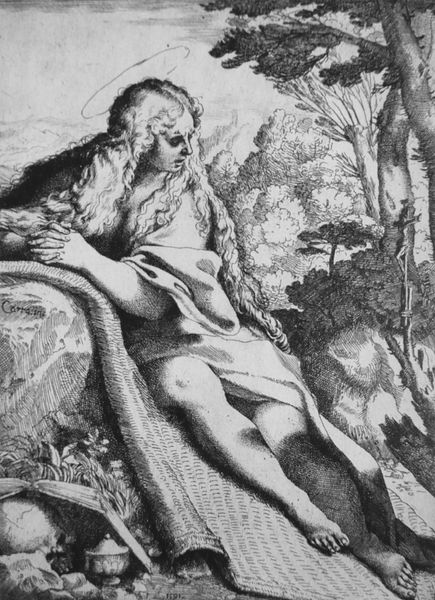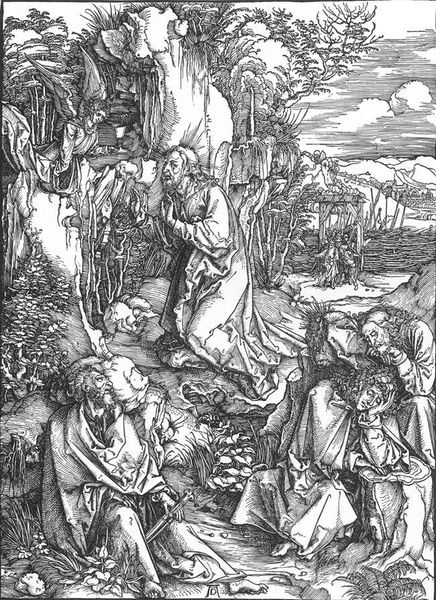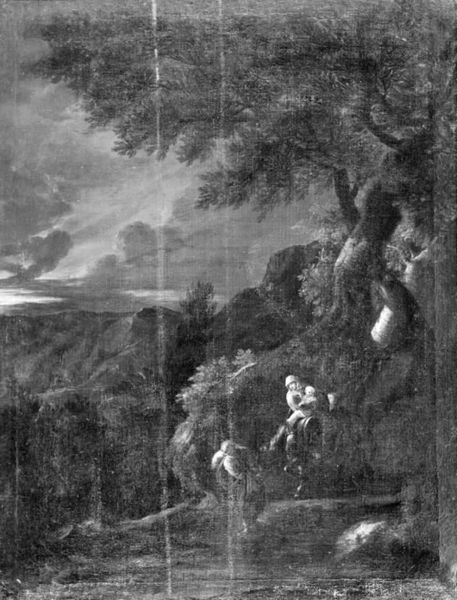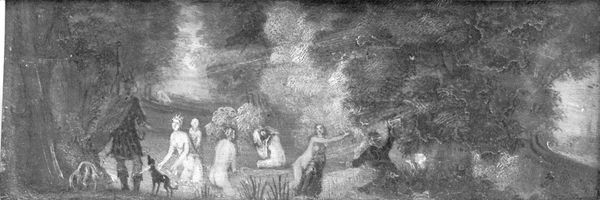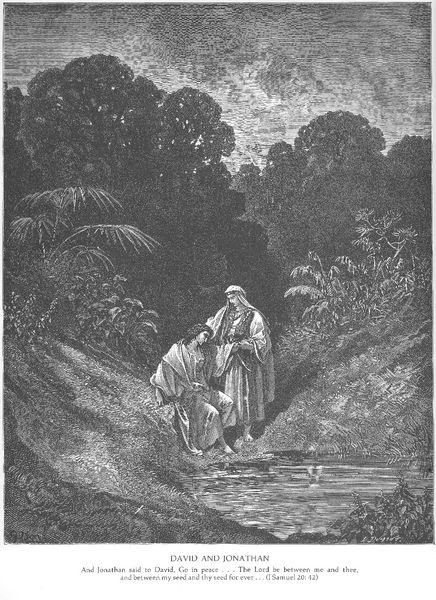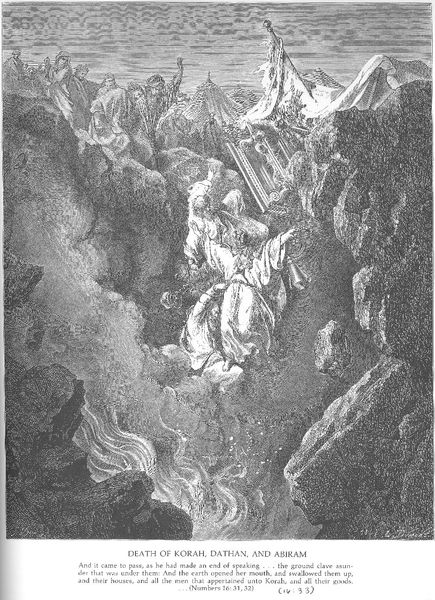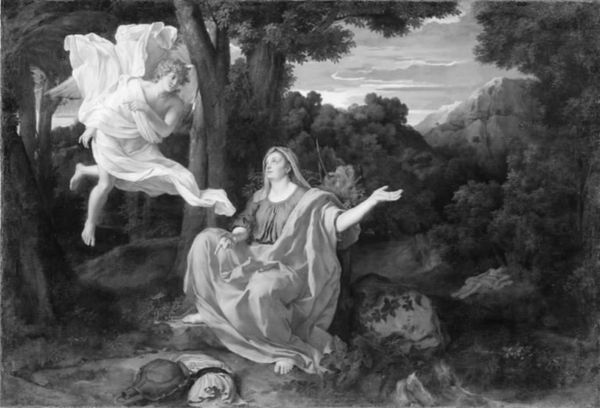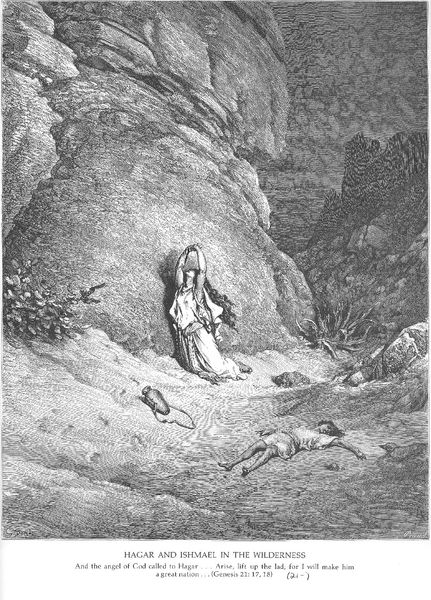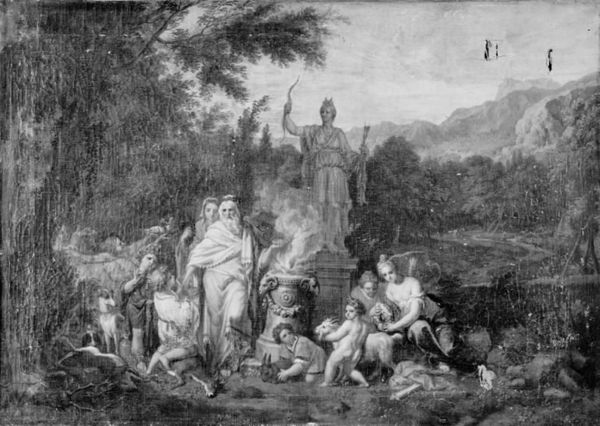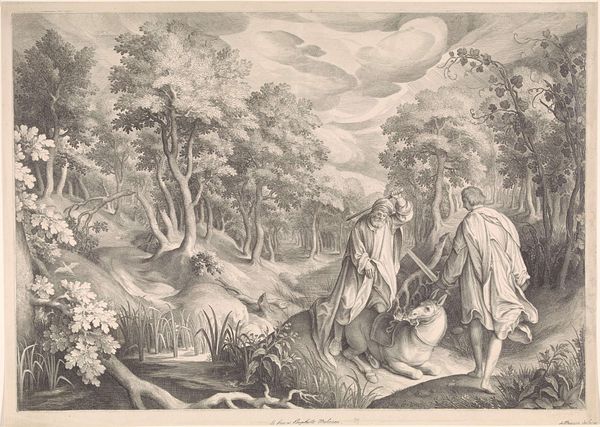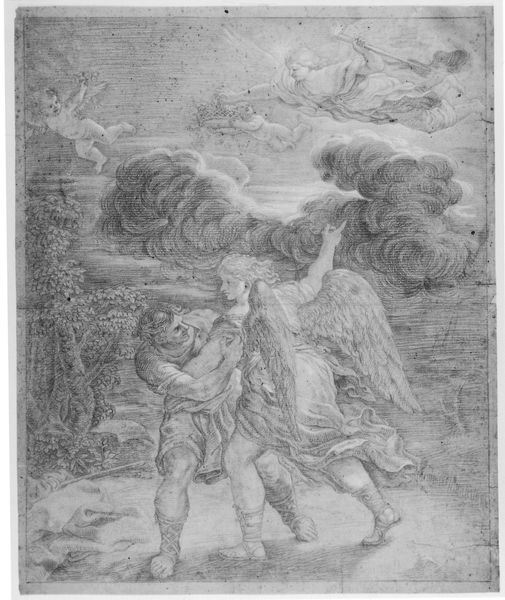
Dimensions: 67 cm (height) x 49 cm (width) (Netto)
Dankvart Dreyer painted ‘The Prophet Elijah in the Desert’, on an unknown date with oil on canvas. The prophet Elijah sits in the wilderness, a place of trial and spiritual transformation in the Judeo-Christian tradition. His pensive gesture—head resting on hand—echoes across time. We see it in depictions of melancholic philosophers of antiquity, and even in modern portraits, this pose signifies deep contemplation, sorrow, or weariness. This gesture transcends its immediate context, linking Elijah's solitude to a universal human experience of introspection and suffering. It is a potent, deeply human symbol; his isolation invites us to contemplate our own moments of doubt and introspection. Notice the barren landscape. This place acts as a mirror reflecting Elijah's internal state. The wilderness is a motif that reappears throughout history, embodying both physical and spiritual desolation. In a psychoanalytic sense, it represents the subconscious, a space where the self confronts its own vulnerabilities and fears. Consider how these symbols resonate even today, reminding us that the past is always present.
Comments
No comments
Be the first to comment and join the conversation on the ultimate creative platform.


